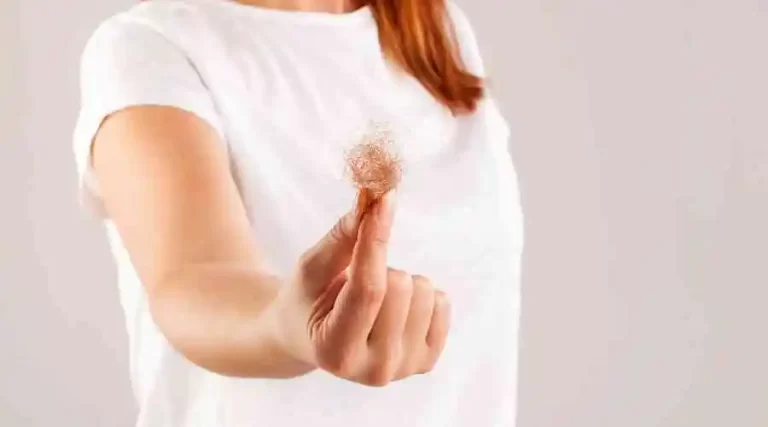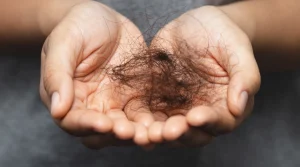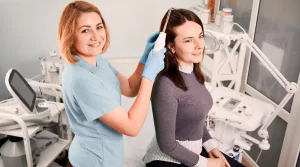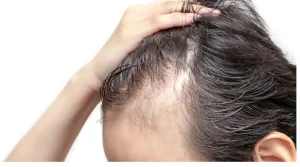Is your hair falling out at a faster rate than you can count? You may have hair loss and need to go to the dermatologist to check it out. Several types of hair loss and probable causes can be found. Even if you can’t do anything to stop hair loss, you may be able to respond to therapy if you see a dermatologist early enough! Find out more about hair loss treatment in Bergen County.
Do you know what causes female hair loss?
Hair loss in women occurs when a woman loses a significant amount of hair without warning. It is common for humans to shed between 50 and 100 individual hairs per day. Getting rid of dead hair and allowing new ones to grow is necessary to maintain a healthy scalp. In cases when the equilibrium is disrupted, hair loss occurs, as more hair falls out and less hair grows in. Hair shedding is not the same as hair loss. Alopecia is the medical word for hair loss.
Almost every part of your body has hair, except for your lips, soles of your feet, and the insides of your eyelids. Vellus hair is a term used to describe fine, short hair that is light in texture. Terminal/androgenic hair is denser, more intensely colored, and noticeably longer.
What kinds of hair loss are there?
Anagen effluvium, telogen effluvium, and FPHL are the three conditions to be aware of.
- Hair follicles are poisoned by medicine that inhibits their growth (like chemotherapy).
- An increased number of hair follicles entering the telogen phase causes telogen effluvium or hair loss.
- This is the most frequent type of alopecia: androgenetic alopecia, often known as female pattern alopecia (FPHL), or male pattern baldness. Over the top of the head and on the sides, hair begins to thin.
How widespread is female pattern baldness?
It’s a common misconception that hair loss is only a man’s problem. It is predicted that more than half of women will have visible hair loss. About 30 million women in the United States are affected by female-pattern hair loss (FPHL), affecting approximately one-third of the vulnerable women.
Are there any women who are more susceptible to hair loss?
Hair loss can strike any woman, young or old. However, it’s more common in the following:
- Females over the age of 40.
- Mothers who have recently given birth.
- Breast cancer survivors and those whose treatment was impacted by other drugs.
- These are women who frequently wear their hair in tight ponytails or braids or utilize harsh chemicals to maintain their hairstyle.
- Women in their menopausal years.
Hair Loss Myths
A lot of misinformation circulates concerning hair loss. In the following list, nothing is true.
- You're balding because you wash your hair too much or have colored or permed it.
- Women who suffer from dandruff experience lifelong hair loss.
- Women's hair falls out permanently as a result of stress.
- Shaved heads have hair that regrows twice as thickly.
- You can stimulate hair growth by standing on your head and increasing blood flow.
- Brushing your hair 100 times a day will improve the health of your hair.
- Hats and wigs exacerbate women's hair loss.
- Only educated women suffer from hair loss.
Common Causes of Female Hair Loss
A person’s hair is a significant component of their appearance since it reflects their sense of fashion or individuality. Hair loss takes away some of your control over how you wish to appear. Hair loss and thinning hair affect many women, and at The Hair for Life Center, we are committed to helping those in need. Your hair and your self-esteem will be restored thanks to the Intralock Process, an innovative non-surgical procedure we developed exclusively for you.
If you notice your hair falling out, you know something is wrong with your body. Knowing what’s causing your hair loss is critical if you want to take steps to stop it or at least slow it down. Three of the most prevalent reasons for hair loss in women are listed here.
Stress
Stress can harm your health. Chronic stress can cause hair loss in addition to headaches, sleeplessness, and depression. According to new research, stress might cause the body’s hair-producing cells to go into hibernation mode. It accomplishes this as a self-defense system to guarantee that all of your energy is focused on the most important parts of your body. Women may experience delayed hair loss for months after a stressful or traumatic incident. Hair may regenerate a few months later, although this isn’t always the case.
Trichotillomania
Trichotillomania is more widespread than you might think, despite its obtuse sounding term. Women who suffer from this condition have significant hair loss due to their inability to control the urge to pluck off their hair. Preadolescents and young adults, mainly those aged 9 to 13, are more susceptible to trichotillomania than any other age group. Hair loss can lower a girl’s self-esteem when she is going through the social and emotional upheavals of adolescence.
Chemotherapy
Despite their effectiveness in treating cancer, chemotherapy medications can damage hair follicles and result in hair loss. Hair loss is frequently the most pronounced during the first two months of chemotherapy. Even before the chemotherapy is finished, hair may begin to regrow.
Many other disorders can induce female pattern baldness, but these are the three most frequent. It is well-known that a woman’s ability to express herself through her hairdo is unassailable, and we respect that. Our breakthrough hair procedure can help a woman who believes her hair loss is taking away her options. Take the first step in regaining your self-confidence in your hair by contacting us today via our website or by calling (973)281-4033!





